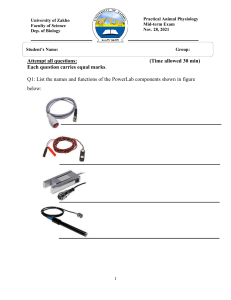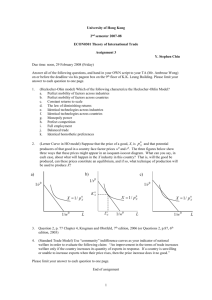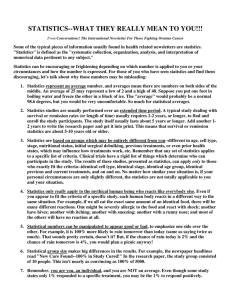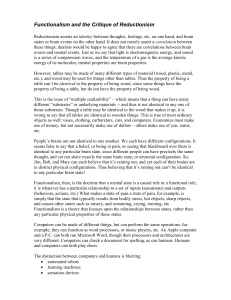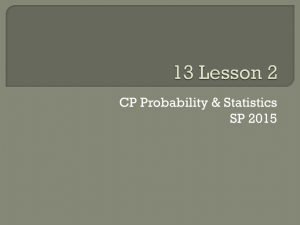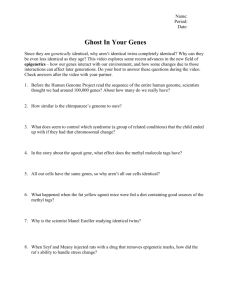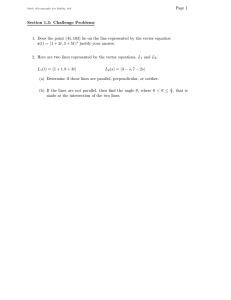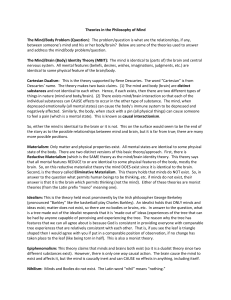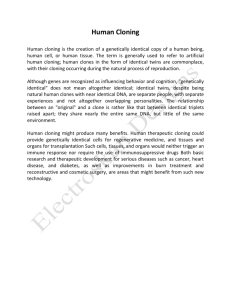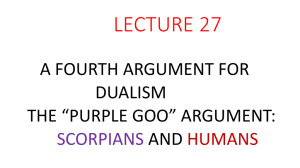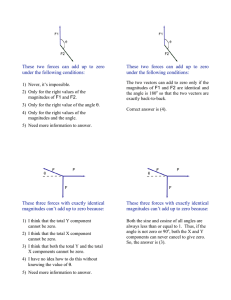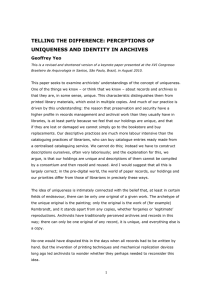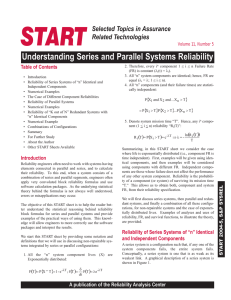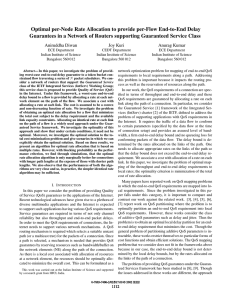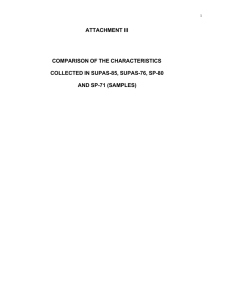Document 11103731
advertisement
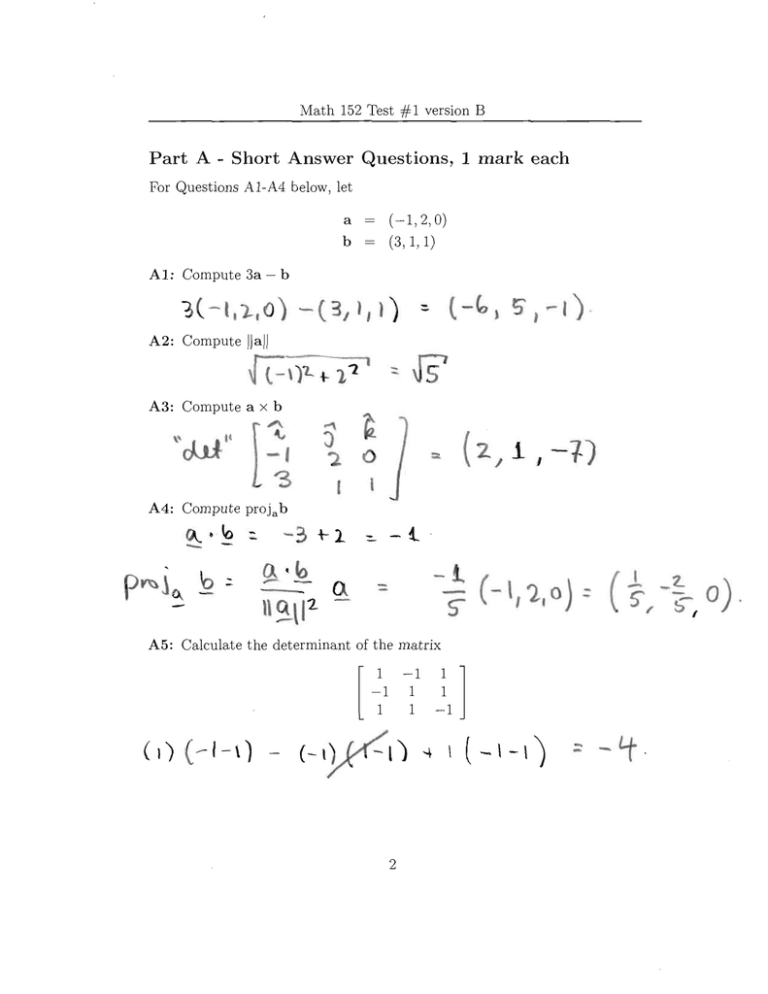
UBC Mathematics 152 Midterm I Answer to Version B Q.B3 Solution: (a) In the parametric formula for L, the direction is the vector multiplied by the parameter 1 ~lL = 5 2 (b) Similarly, the direction of line M is ~lM 2 = 10 = 2~lL . 4 Thus, ~lL and ~lM are constant multiples of each other ⇒ L, M are parallel. Alternatively, i ~lL × ~lM = 1 2 j 5 10 k 2 = i(20 − 20) − j(4 − 4) + k(10 − 10) = ~0 4 ⇒ They are parallel! (c) Answer 1: It is impossible to turn p~L = (1, 0, 0) into p~M = (2, 2, 2) by adding a scalar multiple of (1, 5, 2). Answer 2: If identical, d~ = p~M − p~L = u~lL , but d~ = p~M − p~L = (1, 2, 2) 6= u(1, 5, 2). Answer 3: If identical, p~M = (2, 2, 2) should satisfy the equation for L, thus 1 1 2 1+s 2 0 + s 5 = 2 ⇒ 5s = 2 ⇒ No solutions! 0 2 2 2s 2 Answer 4: If identical, L and M must have infinitely many points of intersection. By equating the two equations for the two lines, s − 2t 1 2 1 2 1 1 2 1 0 + s 5 = 2 + t 10 ⇒ s 5 − t 10 = 2 ⇒ 5s − 10t = 2 2 2s − 4t 2 4 2 4 0 2 2 1 −2 | 1 1 −2 | 1 (2)=(2)−5(1) ⇒ 5 −10 | 2 −−−−−−−−→ 0 0 | −3 ⇒ No solution = no point of intersection! 2 −4 | 2 (3)=(3)−2(1) 0 0 | 0 ~ the two Answer 5: If the projection of d~ = p~M − p~L = (1, 2, 2) onto ~lL is identical to d, lines are identical. If not, they are different. 1 ~lL 15 1 ~ ~ d~|| = Proj~lL d~ = (~lL · d) = lL = 5 6= d! 30 2 ||~lL ||2 2 (d) Answer 1: It is obvious the length of d~⊥ is the distance between the two lines 1 1 1 1 1 1 d~⊥ = d~ − d~|| = 2 − 5 = −1 2 2 2 2 2 r ⇒ ||d~⊥ || = 1 1 + +1= 4 4 r √ 6 6 = . 4 2 Alternatively, using Pythagorean theorem r r √ q 6 6 1 25 2 2 ~ ~ + 1) = = . d = ||d|| − ||d|| || = 9 − ( + 4 4 4 2 Answer 2: Let ~n be a vector connecting p~M = (2, 2, 2) to any point on L: 1 1 2 s−1 ~n = 0 + s 5 − 2 = 5s − 2 . 0 2 2 2s − 2 Now, we slide the point on L until ~n ⊥ ~lL . To find the value of s at this point, we require ~n · ~lL = 0 ⇒ s − 1 + 5(5s − 2) + 2(2s − 2) = 0 ⇒ 30s − 15 = 0 ⇒ s= 1 . 2 Plug the value into the expression for ~n 1 ~n = 2 5 2 2 2 1 −1 −2 − 2 = 21 −1 −2 s ⇒ d = ||~n|| = 1 − 2 2 r r √ 2 1 6 6 1 1 + + 12 = + +1= = . 2 4 4 4 2 (2,2,2) (2,2,2) l dl d M M dll (1,0,0) (1,0,0) L n (s=1/2) L n (s) = s(1,5,2)−(1,2,2)

